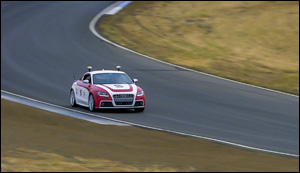Stanford autonomous car learns to handle unknown conditions
28. 3. 2019 | Stanford University | www.stanford.edu
In order to make autonomous cars navigate more safely in difficult conditions – like icy roads – researchers are developing new control systems that learn from real-world driving experiences while leveraging insights from physics.
Researchers at Stanford University have developed a new way of controlling autonomous cars that integrates prior driving experiences – a system that will help the cars perform more safely in extreme and unknown circumstances. Tested at the limits of friction on a racetrack using Niki, Stanford’s autonomous Volkswagen GTI, and Shelley, Stanford’s autonomous Audi TTS, the system performed about as well as an existing autonomous control system and an experienced racecar driver.

“Our work is motivated by safety, and we want autonomous vehicles to work in many scenarios, from normal driving on high-friction asphalt to fast, low-friction driving in ice and snow,” said Nathan Spielberg, a graduate student in mechanical engineering at Stanford and lead author of the paper about this research, published March 27 in Science Robotics. “We want our algorithms to be as good as the best skilled drivers – and, hopefully, better.”
Read more at Stanford University
Image Credit: Kurt Hickman
-jk-




